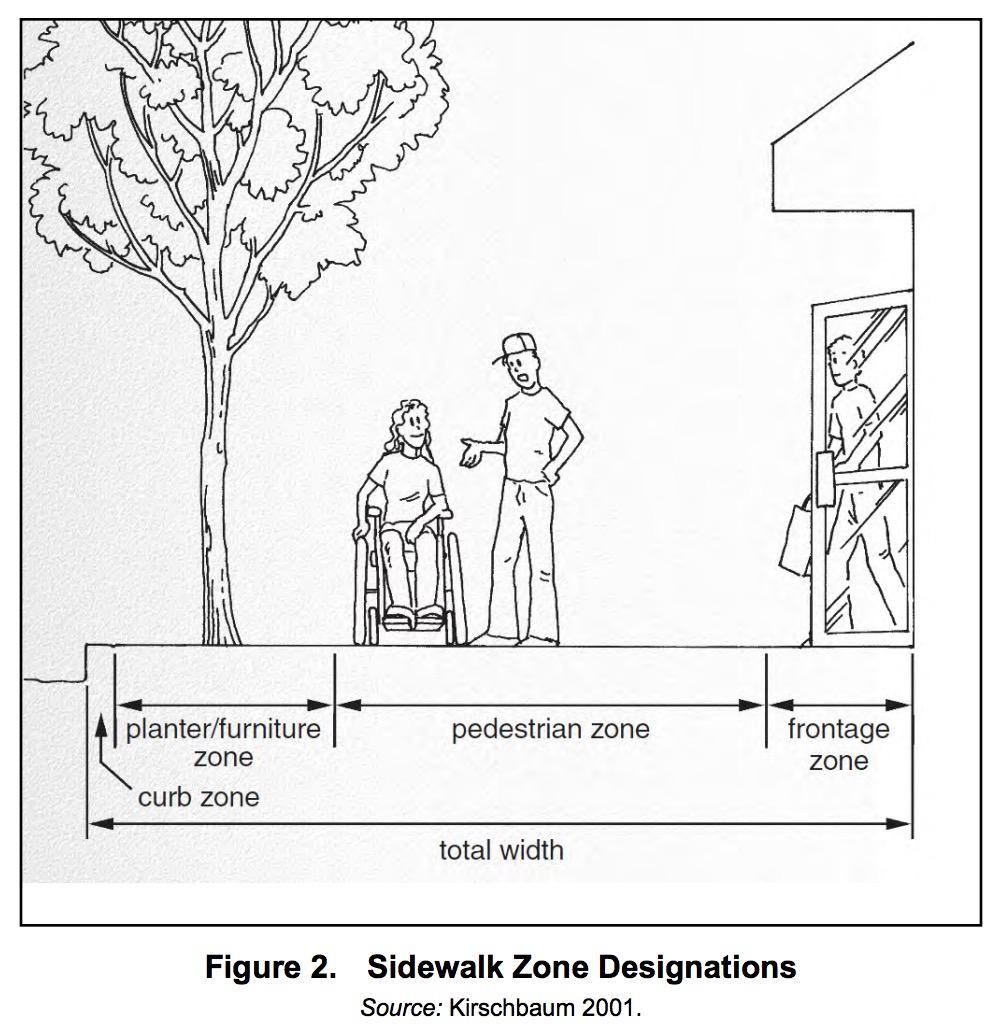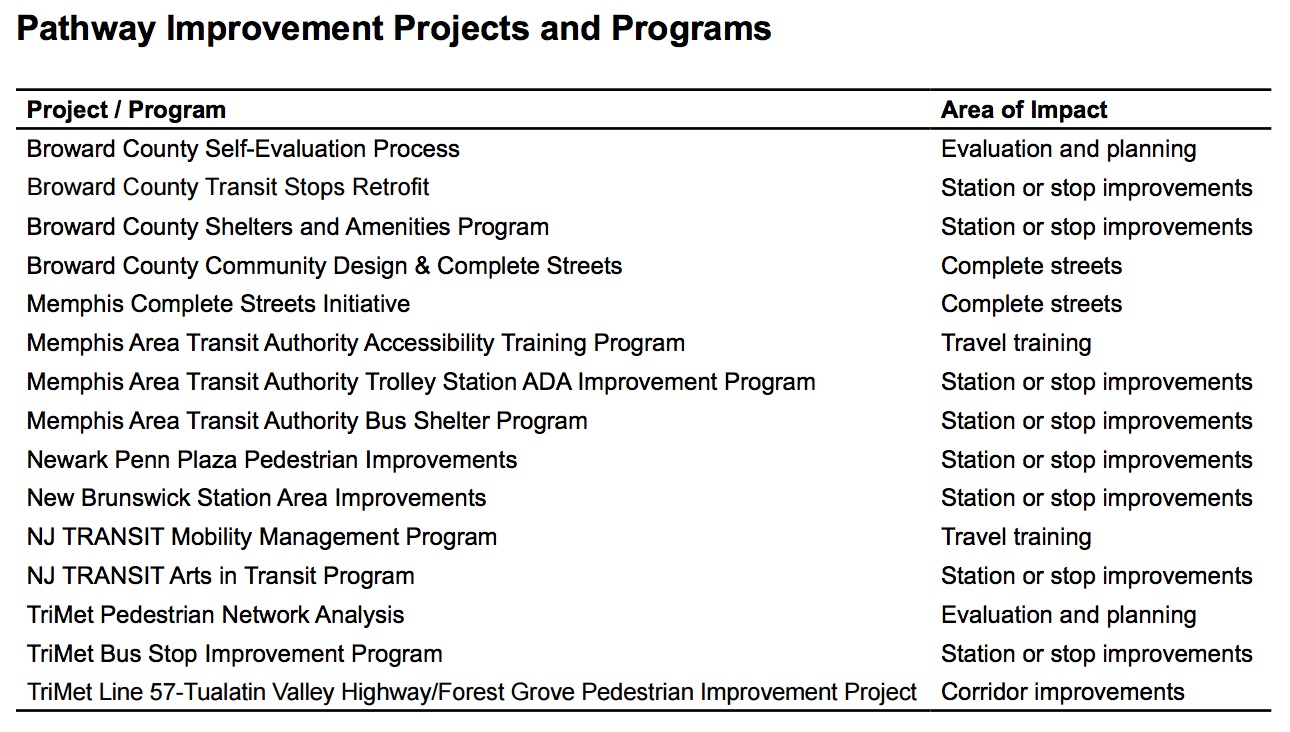MINETA TRANSPORTATION INSTITUTE
Executive Summary
 Persons with disabilities can achieve greater freedom when they have full access to a variety of transit modes. Expanded access allows mobility and independence in their daily lives. But this can only be achieved when the pathways to transit – the infrastructure and conditions in the built environment – allow full access to transit stops, stations, and vehicles. Since passage of the Americans with Disabilities Act (ADA) in 1990, many transit agencies and governmental jurisdictions have made significant progress in this area. The path to change can take many forms. Policy initiatives, incremental enhancements, modifications, and other measures undertaken by transit agencies and their partners have significantly improved access to transit for persons with disabilities and others who rely on public transportation. Transit agencies have an incentive to maximize the use of fixed-route services by persons with disabilities: these services are generally less costly to operate than ADA paratransit services, and they can be more cost-effective still when supported by increased ridership.
Persons with disabilities can achieve greater freedom when they have full access to a variety of transit modes. Expanded access allows mobility and independence in their daily lives. But this can only be achieved when the pathways to transit – the infrastructure and conditions in the built environment – allow full access to transit stops, stations, and vehicles. Since passage of the Americans with Disabilities Act (ADA) in 1990, many transit agencies and governmental jurisdictions have made significant progress in this area. The path to change can take many forms. Policy initiatives, incremental enhancements, modifications, and other measures undertaken by transit agencies and their partners have significantly improved access to transit for persons with disabilities and others who rely on public transportation. Transit agencies have an incentive to maximize the use of fixed-route services by persons with disabilities: these services are generally less costly to operate than ADA paratransit services, and they can be more cost-effective still when supported by increased ridership.
This research study explores, through case studies, efforts that have improved pathways to transit. Following a brief national survey to identify prospective case study locations, interviews and site visits were conducted with five transit agencies and their partners. The agencies chosen are actively improving the pathways that connect transit consumers – particularly people with disabilities – to transit stations and stops. The agencies are:
- Broward County, Florida – Broward County Transit (BCT);
- Memphis, Tennessee – Memphis Area Transit Authority (MATA);
- Newark and New Brunswick, New Jersey – NJ TRANSIT (NJT);
- Portland, Oregon – Tri-County Metropolitan Transportation District of Oregon (TriMet);
- Wenatchee, Washington – Link Transit.
The projects and experiences of these five agencies are diverse, yet commonalities exist. All have been engaged in station or stop improvements, and all have worked to make improvements that extend far beyond the immediate area of a station or stop. All approach this work expansively, and with an understanding that 1) to best serve their consumers with disabilities, they need to think about many aspects of the trip – not just what happens once a passenger boards a vehicle; 2) improvements that are made have the power to enable consumers with disabilities to live their lives independently, and as fully engaged as possible; and 3) improvements in pathways to transit help all consumers.
Certain themes emerged across the five agencies. The efforts undertaken can be viewed via their area of impact, which includes Corridor Improvements, Complete Streets, Evaluation and Planning, Station or Stop Improvements, and Travel Training. See the table below for detail. 
Efforts to improve the pathway to transit can be components in larger efforts to increase mobility, such as what can occur through Complete Streets initiatives, or when an agency and its partners undertake large-scale evaluation processes. Creation and enhancement of accessible pathways to transit was one tangible result of Complete Street initiatives in both Broward County and Memphis.
Alternatively, opportunities to improve pathways can arise out of agency policy. One example of this is a policy that encourages staff to explore partnerships with other stakeholders, and to look for opportunities to undertake projects that may be both large-scale and immensely fine-grained in their attention to detail – as is the case in the improvements to Newark Penn Station and to New Brunswick Station. The agency involved, NJT, explored ways to work collaboratively with project partners, and to extend the impact of projects in both locations to dramatically improve accessibility to high-use facilities. Looking for opportunities and exploring new ways of achieving goals was also paramount when MATA located bus stops and shelters near residences for the elderly and persons with disabilities, or when Link Transit made creative use of a new paving material.
Download full version (PDF): Improving Pathways to Transit for Persons with Disabilities
About the Mineta Transportation Institute
transweb.sjsu.edu
The Mineta Transportation Institute (MTI) was established by Congress in 1991 as part of the Intermodal Surface Transportation Equity Act (ISTEA) and was reauthorized under the Transportation Equity Act for the 21st century (TEA-21). MTI then successfully competed to be named a Tier 1 Center in 2002 and 2006 in the Safe, Accountable, Flexible, Efficient Transportation Equity Act: A Legacy for Users (SAFETEA-LU).
Tags: Disability, Mineta Transportation Institute, MTI, San Jose State University






 RSS Feed
RSS Feed